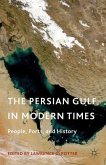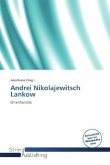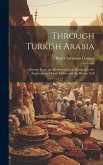In the recent years, trade, cultural exchange and transfer of knowledge in the Indian Ocean have come increasingly into the scope of various scholarly disciplines. The previous perception that the exploitation of this sea did only start with the European colonial expansion at the end of the 15th century had to be abandoned: The Europeans absorbed the long existing structures rather than creating new ones. This concept of the Indian Ocean as a coherent space of transfer is also adopted in this volume. Some of the articles were presented at a conference held in Vienna, while the others were supplied independently. The contributions are arranged around the two "poles", represented by the western and the eastern part of the Indian Ocean, especially Iran and China, but also other cultures and the manifold relations with the land-based Silk Road are discussed. The time frame ranges from the 14th to the 17th century.
Bitte wählen Sie Ihr Anliegen aus.
Rechnungen
Retourenschein anfordern
Bestellstatus
Storno








